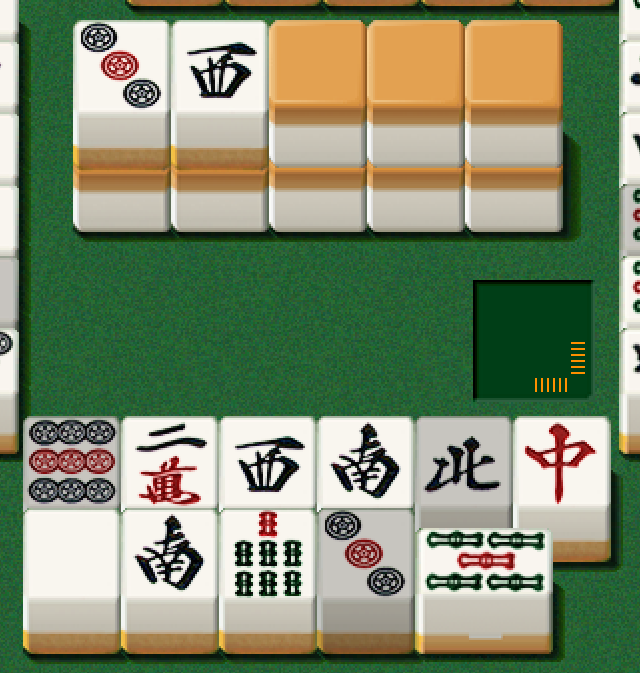Riichi and Omote Suji Safety
Watch me on Twitch long enough and you’ll know that I get irrationally irritated by people claiming suji safety on a riichi tile or even boldly stating that it’s a suji trap. A suji trap for WHO?! The riichi call changes everything on a table. You cannot trust omote suji on a tile used to declare riichi.
Matagi suji like yesterday certainly give us information on what may be a dangerous tile. However, trying to divine safe tiles using omote suji (basic suji) is a risky business.
Retaining a 1 3 5 shape later on in your hand’s progression is fairly common. Once you reach your tempai, it would be normal here to discard the 5 and wait with a 13 inside wait.
What can we do as poor victims of this riichi on the 5? Take a breath and look at the discard pool and think about kabe. If you can see four of either the 1 or 3, it’s impossible for that player to be waiting with a 13 so you can rule it out as their final shape.
It is possible that they’re looking to complete a pon or perhaps a wait on the pair. However, if this is the case, it may be possible to see a strange progression in their discard pool (one that does not look like a pinfu/tanyao progression). If the discard progression looks fairly regular, the danger of that omote suji on the riichi tile reduces dramatically.
If you can see three of either the 1 or 3 tiles, we can still imagine there is more safety if push comes to shove.
This can be applied to a 246 shape. It would be normal to cut the 6, and the above logic follows.
Photo from Yumi Uotani’s “Improve Your Modern Mahjong Fast."


